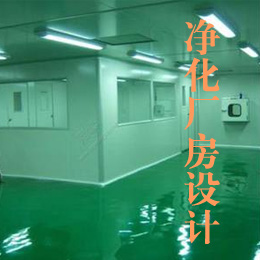|
FS 209E and ISO 14644CleanroomClassification Standards
Introduction
Summary of FS 209E and ISO 14644-1 and -2
Airborne Particulate Cleanliness Class Comparison
Airborne Particulate Cleanliness Classes
Required Testing
Optional Testing
The History and Future of ISO Cleanroom Standards
ISO Cleanroom Standards
ISO TC 209 Working Groups
Sources and Links
Introduction
Federal Standard 209E has long been the only definition of cleanroom classification levels available from a standards organization. FS209E,Airborne Particulate Cleanliness Classes in Clean Rooms and Clean Zones, is from the U.S. General Service Administration and approved for use by all U.S. agencies. In the absence of an international standard, FS 209E was broadly used internationally.
The need for a new international standard that covered more cleanroom environmental parameters and practices led to the formation of a technical committee of the International Standards Organization. The technical committee is named, ironically,TC 209 Cleanrooms and Associated Controlled Environments. The goal of TC 209 is "standardization of equipment, facilities, and operational methods for cleanrooms and associated controlled environments. This includes procedural limits, operational limits and testing procedures to achieve desired attributes to minimize micro contamination."
This ISO committee will produce 10 new standards documents that relate to cleanrooms or clean zones (described below). The first two standards have been published: ISO 14644-1 and -2. The first document, ISO 14644-1,Cleanrooms and associated controlled environments Part 1: Classification of airborne particulateshas been released as a final draft international standard (FDIS). The second document, ISO 14644-2,Cleanrooms and associated controlled environments Part 2: Testing and monitoring to prove continued compliance with ISO 14644-1; has been released as a draft international standard (DIS). Both are legal for use in trade.
By U.S. law, FS 209E can be superseded by new international standards. It is expected that 209E will be in use in some industries through the next five years, but that eventually it will be replaced globally by ISO 14644-1.
The actual text of the standards must be ordered from the appropriate standards organization (seeSources and Links). This paper gives a general overview of the required particle count measurements given in the standards.
Return to contents
Summary of FS 209E and ISO 14644-1 and -2
The cleanliness classification levels defined by FS209E and ISO 14644-1 are approximately equal, except the new ISO standard uses new class designations, a metric measure of air volume and adds three additional classes - two cleaner than Class 10 and one beyond than Class 100,000. The second new ISO standard, ISO 14644-2, gives requirements for monitoring a cleanroom or clean zone to provide evidence of its continued compliance with ISO 14644-1.
The following table compares FED STD 209E to the new ISO 14644-1 classifications.
Airborne Particulate Cleanliness Class Comparison
The ISO standard also requires fewer sample locations, especially as the cleanroom/area size increases; however, the ISO standard does require minimum one minute samples, whereas the Federal Standard allows shorter samples, especially at smaller particle sizes.
For example, to certify an FS Class 10 cleanroom (ISO class 4), with 250 square feet (7.08 square meters), classified at 0.3 micron with a 1 cf/m flow rate particle counter, the required number of sample locations, sample volumes, and sample times would be as follows:
FS209E requires 10 sample locations, 19.6 liter minimum sample volume (0.85 cf), and a sample time of 51 seconds. This yields a total minimum sample time of 510 seconds and 10 equipment moves.
ISO 14644-1 requires 5 sample locations, 19.6 liter minimum sample volume (0.85 cf ), but also a minimum sample time of one minute yielding three samples of one cubic foot. This yields a total sample time of 180 seconds and three equipment moves.
The precise count levels required by ISO 14644-1 for each classification, by particle size, are given below.
Airborne Particulate Cleanliness Classes(by cubic meter)
ISO 14644-2 determines the type and frequency of testing required to conform with the standard. The following tables indicate which tests are mandatory and which tests are optional.
Required Testing(ISO 14644-2)
Optional Testing(ISO 14644-2)
Return to contents
The History and Future of ISO Cleanroom Standards
In 1992, at the urging of the Institute of Environmental Sciences, the American National Standards Institute petitioned ISO to create a technical committee on cleanrooms and associated controlled environments. This new committee, ISO TC 209, was formally established in May 1993. Its mission is to develop an international standard for cleanrooms and associated controlled environments that encompasses the standardization of equipment, facilities, and operational methods, while also defining procedural and operational limits and testing procedures to minimize contamination.
Thirty-four countries are currently active in ISO TC 209. Voting members are Australia, Belgium, China, Denmark, Finland, France, Germany, Italy, Jamaica, Japan, Korea, The Netherlands, Norway, Portugal, Russia, Sweden, Switzerland, the United Kingdom, and the United States. Nonvoting members are Bulgaria, the Czech Republic, Egypt, India, Ireland, Malaysia, New Zealand, the Philippines, Poland, Saudi Arabia, South Africa, Thailand, Turkey, Ukraine, and Yugoslavia.
Two Draft International Standards (DIS) have been released by the committee: ISO/DIS 14644-1,Cleanrooms and associated controlled environments-Part 1: Classification of airborne particulates, and ISO/DIS 14644-2Cleanrooms and associatedcontrolled environments-Part 2: Specifications for testing and monitoring to prove continued compliance with ISO 14644-1. These first ISO cleanroom standards are two of 10 documents (see table A) that will make up the new family of global cleanroom standards. Many of these documents are at the final voting stage and can be legally used in trade.
ISO Cleanroom Standards
ISO/FDIS 14644-1 Classification of Air Cleanliness
This document covers the classification of air cleanliness in cleanrooms and associated controlled environments. Classification in accordance with this standard is specified and accomplished exclusively in terms of concentration of airborne particles. ISO/DIS 14644-2 Cleanroom Testing for Compliance
This document specifies requirements for periodic testing of a cleanroom or clean zone to prove its continued compliance with ISO 14644-1 for the designated classification of airborne particulate cleanliness. These requirements invoke the test described in ISO 14644-1 for the classification of the cleanroom or clean zone. Additional tests are also specified, to be carried out based on the requirements of this International Standard. Optional tests, to be applied at the user's discretion, are also identified. ISO-14644-3 Methods for Evaluating & Measuring Cleanrooms & Associated Controlled Environments
This document describes the necessary performance tests for various types of cleanrooms. The occupancy states of "as built", "at rest", and "in operation" are defined as well as appropriate levels of certification. A large index is provided on a variety of test methods and appropriate equipment.
ISO-14644-4 Cleanroom Design & Construction
This document will be a primer on the design and construction of cleanrooms. It will cover all aspects of the process from design development to startup and commissioning.
ISO-14644-5 Cleanroom Operations
This document will be a primer on cleanroom operation. It will cover all aspects of the operation of a cleanroom including entry and exit procedures for equipment and personnel, education and training, cleanroom apparel, and facility issues such as maintenance, housekeeping, monitoring, system failure, etc.
ISO-14644-6 Terms, Definitions & Units
This document will provide a consistent reference for all terms, definitions and units discussed across all ISO cleanroom standards.
ISO-14644-7 Enhanced Clean Devices
This document will focus on specialized stand-alone clean spaces including their design, construction, and operations.
ISO-14644-8 Molecular Contamination
This will be a new document covering measurement of airborne molecular contamination in clean zones. The first meeting is scheduled for December 1998.
ISO-14698-1 Biocontamination: Control General Principles
This document describes principles and basic methodology for a formal system to assess and control biocontamination where cleanroom technology is applied.
ISO-14698-2 Biocontamination: Evaluation & Interpretation of Data
This document describes basic principles and methodology for microbiological data evaluation. It provides a method of estimating of biocontamination from sampling for viable particles in zones at risk.
ISO-14698-3 Biocontamination: Methodology for Measuring Efficiency of Cleaning Inert Surfaces
This document outlines the methodology to measure the effectiveness of cleaning and/or disinfection of inert surfaces having biocontaminated wet soiling or biofilms.
ISO TC 209 Working Groups
Listed below are ISO TC 209's seven working groups and their missions.
Working Group 1
ISO 14644-1, "Classification of Air Cleanliness" Three new classes have been added to the existing standard, Federal Standard 209, two cleaner and one dirtier.
ISO 14644-2 covers specifications for testing and monitoring. This document specifies the requirements for monitoring a cleanroom or clean zone to provide evidence of its continued compliance with ISO 14644-1 for the designated classification of airborne particulate cleanliness. A schedule of normative and informative tests is included in the document.
Working Group 2
ISO 14698-1, "Biocontamination Control General Principles". This document describes the principles and basic methodology for a formal system to assess and control biocontamination. It will include the general requirements of a sampling plan; target, alert, and action levels; qualification; and reporting.
ISO 14698-2, "Evaluation and Interpretation of Biocontamination Data." This document describes the basic principles and methodological requirements for all microbiological data evaluation and the estimation of biocontamination data obtained from sampling for viable particles. It will also include evaluation of the initial monitoring plan and of the data resulting from routine monitoring, as well as analysis of the data, trending, and record keeping.
Working Group 3
A working group on metrology and testing methods. Performance tests are specified at operational phases—as-built, at-rest, and operational. The items to be measured are categorized as either primary or user-optional tests. Primary tests include particle count, airflow velocity, airflow volume, pressure differential, and installed filter leakage. User-optional tests include flow visualization, airflow parallelism, airflow turbulence, temperature, humidity, molecule contamination, electrostatic charge, particle fallout, recovery, and integrity.
Working Group 4
ISO 14644-4, "Design and Construction." This document specifies requirements for the design and construction of cleanroom and clean air devices, as well as requirements for start-up and qualification. It also provides guidance on the basic elements of design and construction.
Working Group 5
A cleanroom operations working group. Topics to be addressed include entry/admittance, procedures, and cleaning, as well as maintenance as it relates to equipment, materials, and people.
Working Group 6
In detailing terms, definitions, and units, the definitive document of this working group must include all definitions from all approved documents of ISO TC 209. Consequently, it will be the final ISO TC 209 document.
Working Group 7
The Enhanced Clean Devices working group.
Return to contents
Sources and Links
ISO/FDIS 14644-1 and ISO/DIS 14644-2 fromTechnical Committee 209of theInternational Standards Organization, or USA source of ISO Documents:
Institute of Environmental Sciences & Technology (IEST)
FS 209E from the General Services Administration. Order from:
Arlington Place One 2340 South Arlington Heights, Suite 100 Arlington Heights, IL 60059 Phone: 1-847-981-0100 Fax: 1-847-981-4130 Standards Order Desk
An MD&DI February 1998 Column:Cooperation Leads to Rapid Development of Global Cleanroom Standards, by Anne Marie Dixon and Richard A. Matthews
Naval Publications and Forms Center 700 Robbins Ave., Section D BLD4 Philadelphia, PA. 19111 Phone: 215-697-2667 Fax: 215-697-2978 Summary of ISO Cleanroom Standards, fromMidwest Cleanroom Associates
|
||||||||||||||||||||||||||||||||||||||||||||||||||||||||||||||||||||||||||||||||||||||||||||||||||||||||||||||||||||||||||||||||||||||||||||||||||||||||||||||||||||||||||||||||||||
声明:本网站发布的内容(图片、视频和文字)以原创、转载和分享网络内容为主,如果涉及侵权请尽快告知,我们将会在第一时间删除。文章观点不代表本网站立场,如需处理请联系客服。电话:189-5653-9761。
本站全力支持关于《中华人民共和国广告法》实施的“极限化违禁词”的相关规定,且已竭力规避使用“违禁词”。故即日起凡本网站任意页面含有极限化“违禁词”介绍的文字或图片,一律非本网站主观意愿并即刻失效,不可用于客户任何行为的参考依据。凡访客访问本网站,均表示认同此条款!反馈邮箱:365667427@qq.com。
IEST-RP-CC006.3:关于安徽洁净室的测试
测试洁净室和清洁区域的首要目的是确定它们的操作性能。现有的“IESTRP-CC006.3:洁净室的测试”,提供了一套经过检验而且是标准化的测试程序,它可以确定洁净室和清洁区域的性能。测试程序共分为两类:初步测试和中级测试。初步测试与...
安徽洁净室换气次数检测操作规程
目的:检测洁净室的换气次数范围:本规程适用于本公司洁净室(区)中换气次数的监测和洁净度等级的验证。依据:YY0033-2000《无菌医疗器具生产管理规范》、《QDF-6型数字式风速仪使用说明书》、GB50591-2010《洁净室施工及验收规范》执行部门:质...
安徽洁净室工程业务人员需要掌握哪些内容?
从技术人员的角度出发,我认为作为一个洁净室工程业务人员,除了应具备简单行业知识以外,在业务过程中,还应该对下列情况充分了解,这样可以对公司和您个人有以下(但不仅仅是以下)几点好处:1、给人以示您和公司的专业性;2、给人以示您和公司的负责性;3、使每家报价有...
合肥洁净室(区)悬浮粒子数计算方法的探讨
本文分析了在洁净室(区)空气中悬浮粒子的测试中,对同一个洁净室选取不同个采样点后,所得95%的置信上限(即UCL值)差异显著的原因,并以中心极限定理证明了由于采样点少而整体不服从正态分布的情况,从而提出了以洁净室中每个采样点几次采样的UCL值来判定其是否达...
医疗器械生产企业洁净室(区)监测
医疗器械生产企业洁净室(区)监测医疗器械生产企业要对洁净室(区)环境进行控制和监测,在YY0033—2000《无菌医疗器具生产管理规范》附录C中规定了无菌医疗器具洁净室(区)环境要求及监测项目,我所承接无菌医疗器械生产环境的监测,监测的项目有:...
安徽洁净室的顶棚天花有什么特点?
洁净室的顶棚天花是洁净室的主要组成部分,它们随气流组织、照明布置、送风装置和结构形式的不同而有不同的做法。一般可分为带有送风功能的顶棚和不带有送风功能的顶棚两种。后者的构造比较简单。洁净室的顶棚的面层材料要求光治、不积尘。可采用塑料贴面板、五夹板油接、薄钢...


 客服微信
客服微信